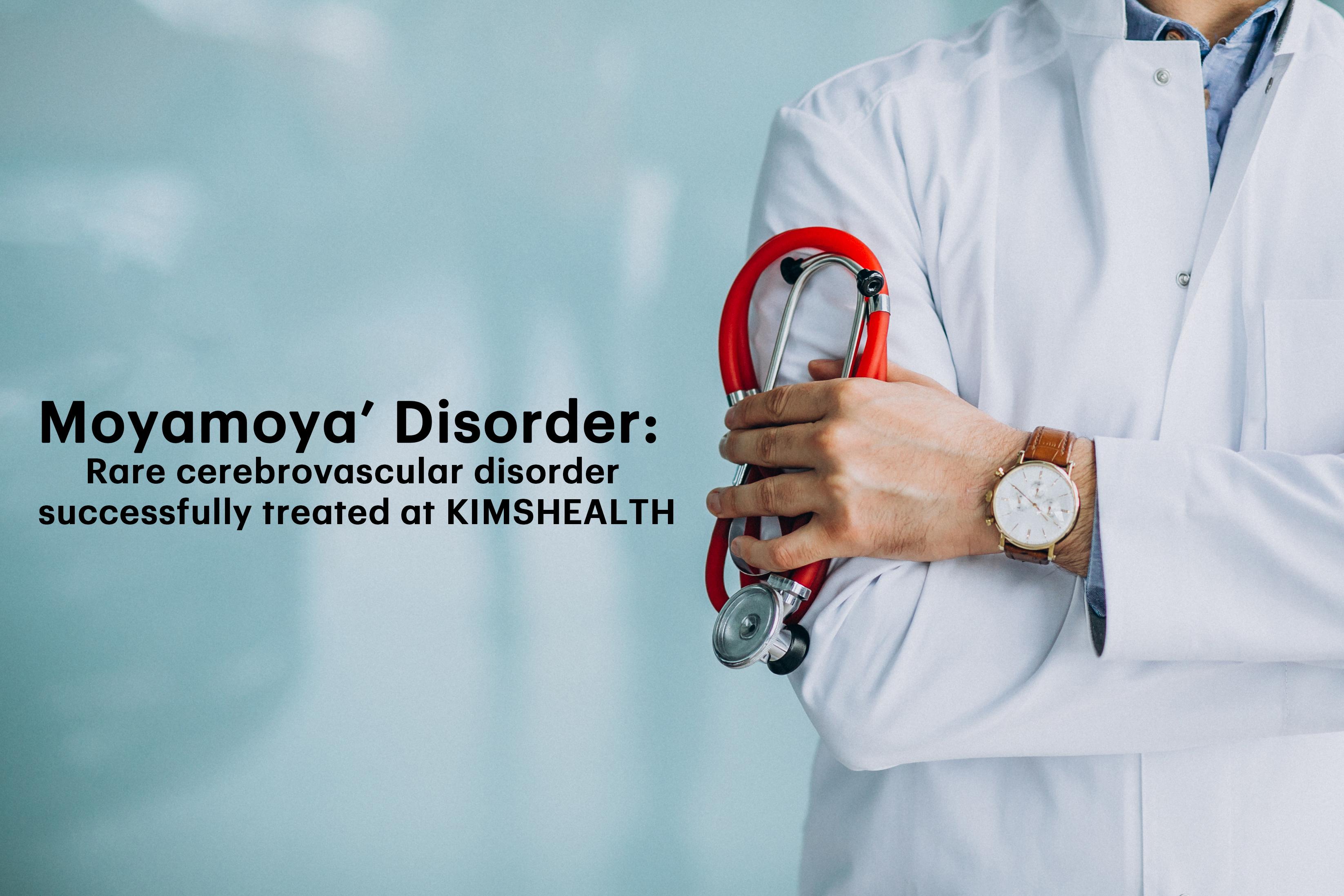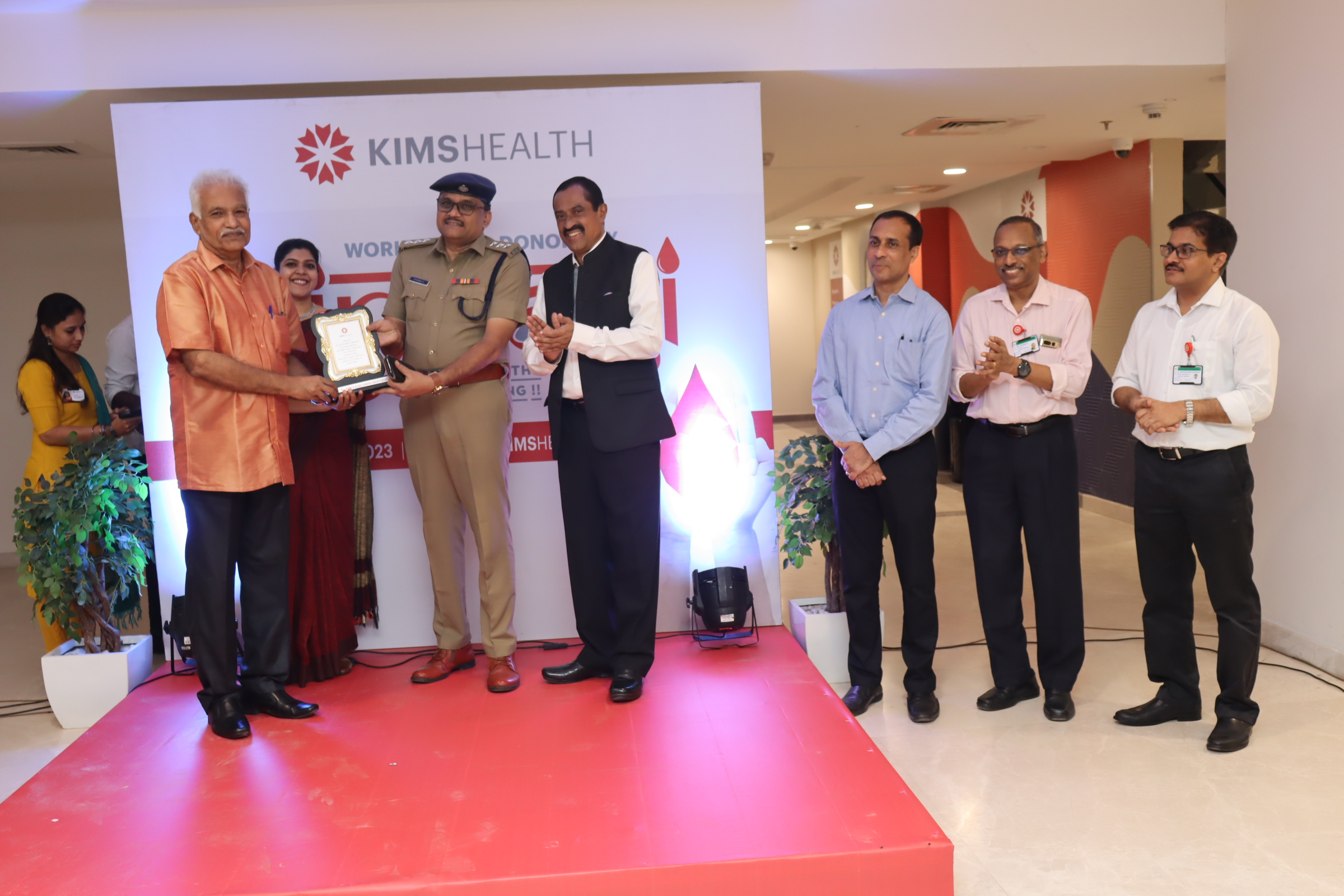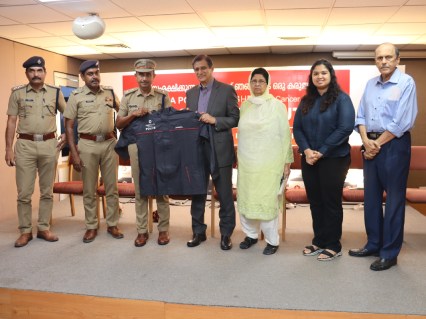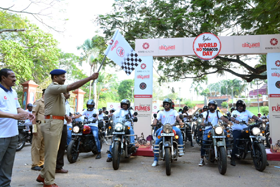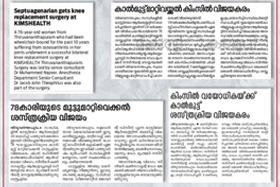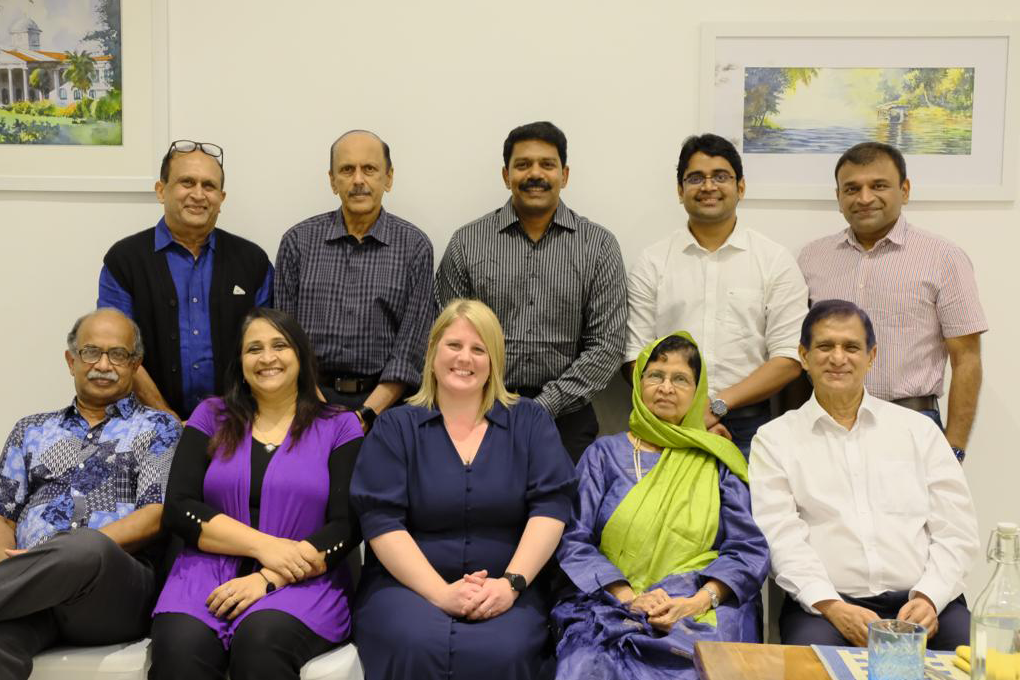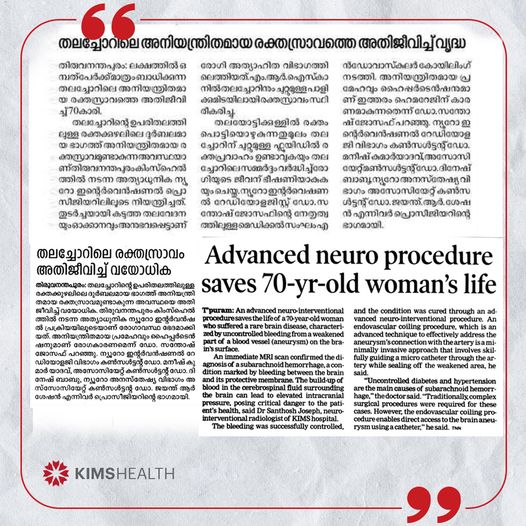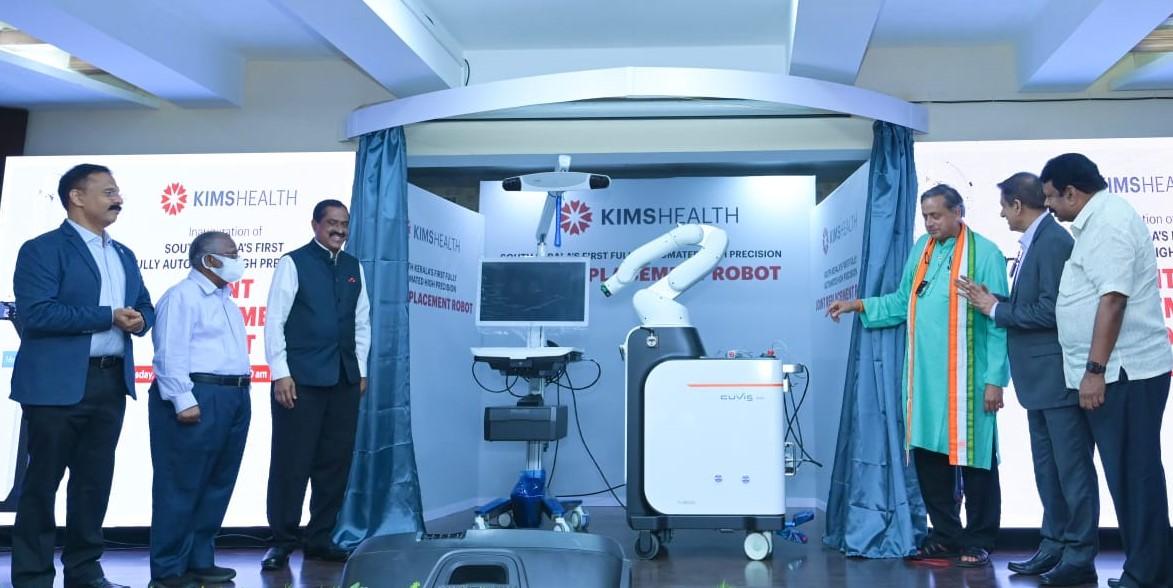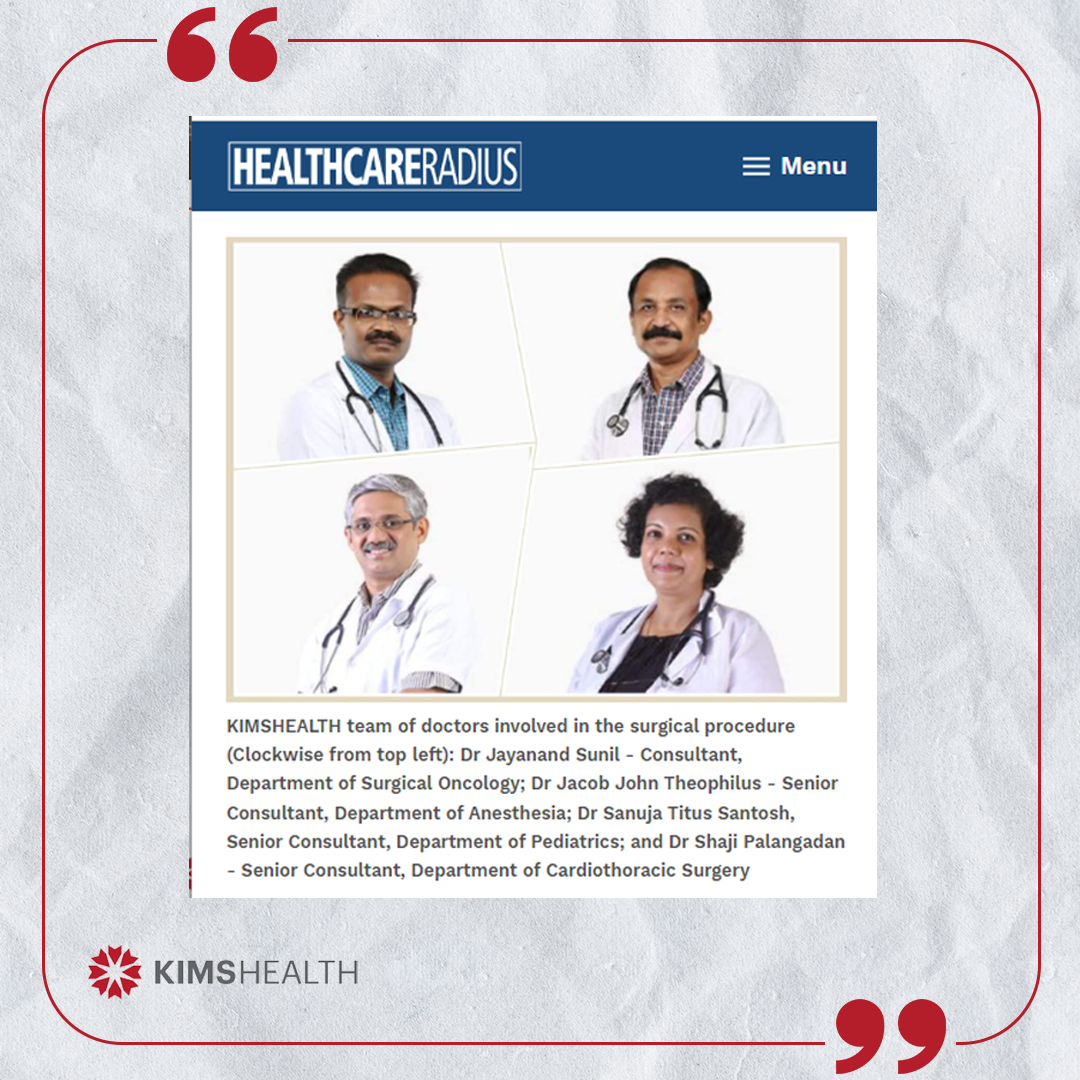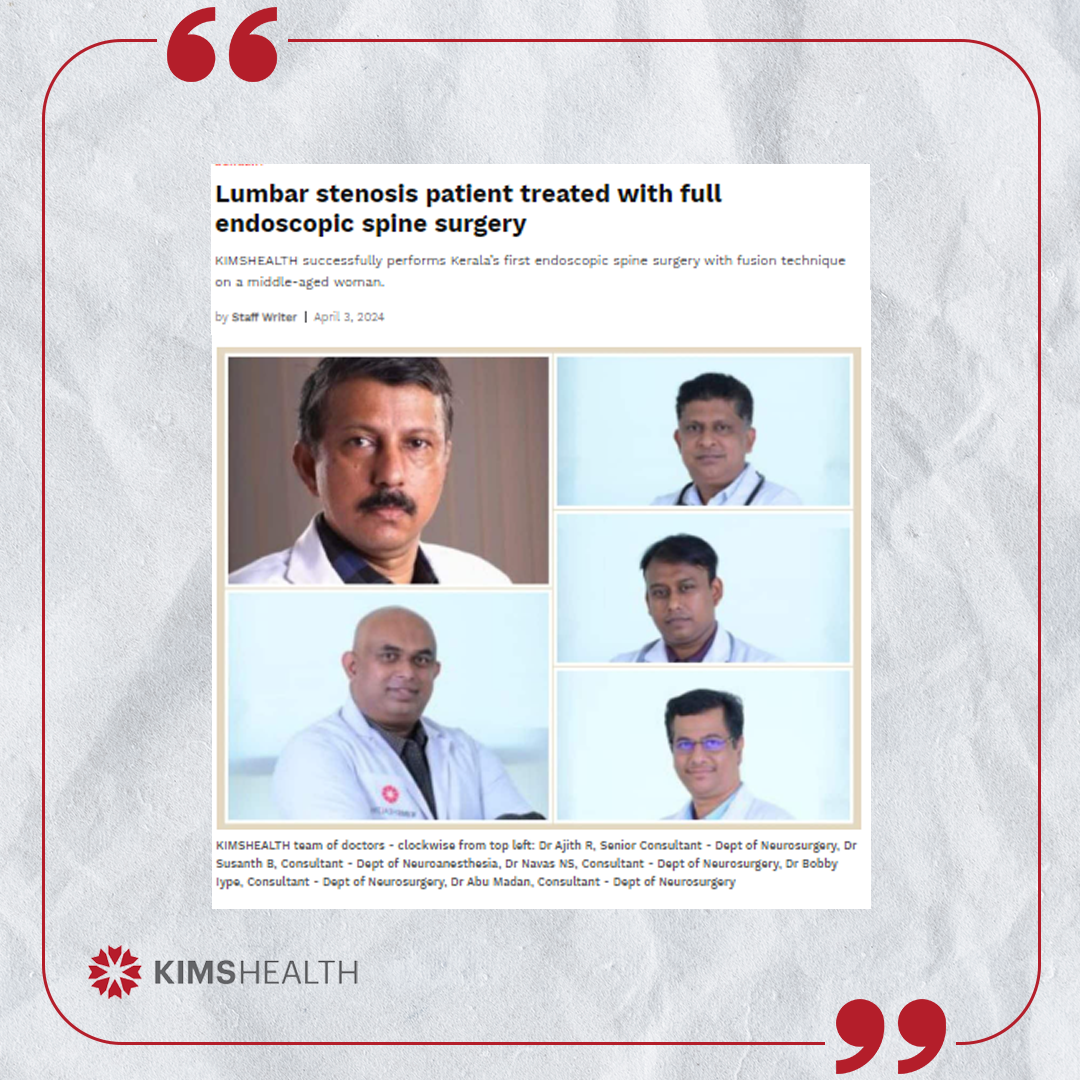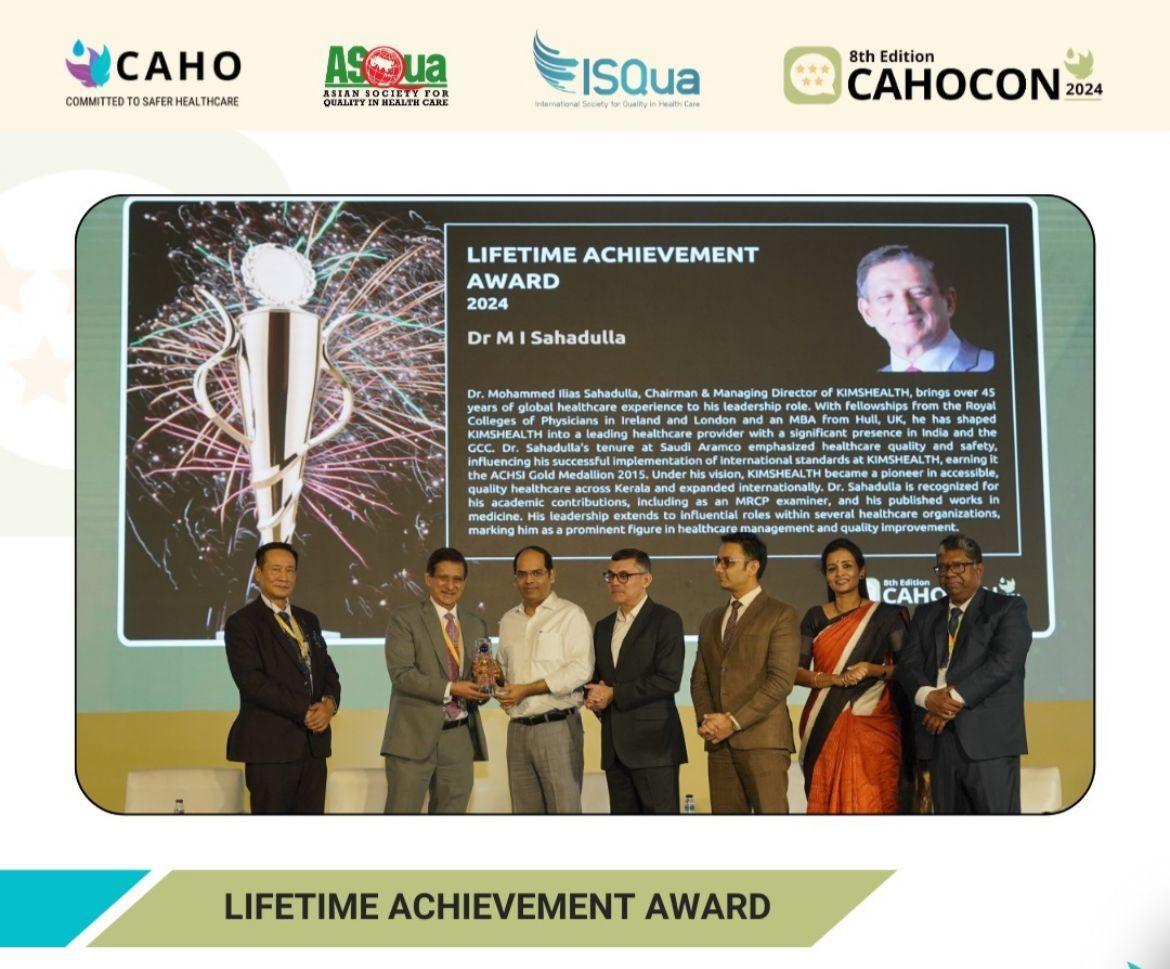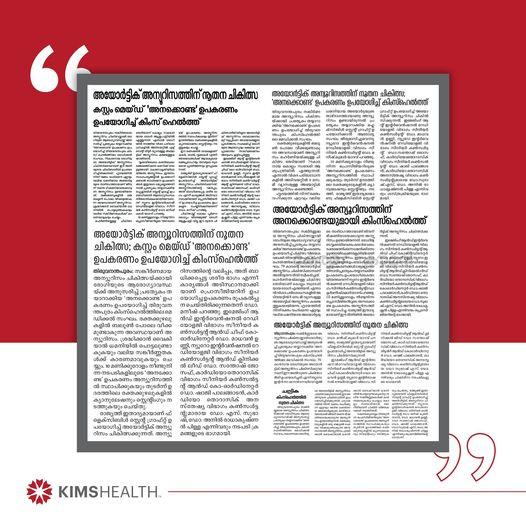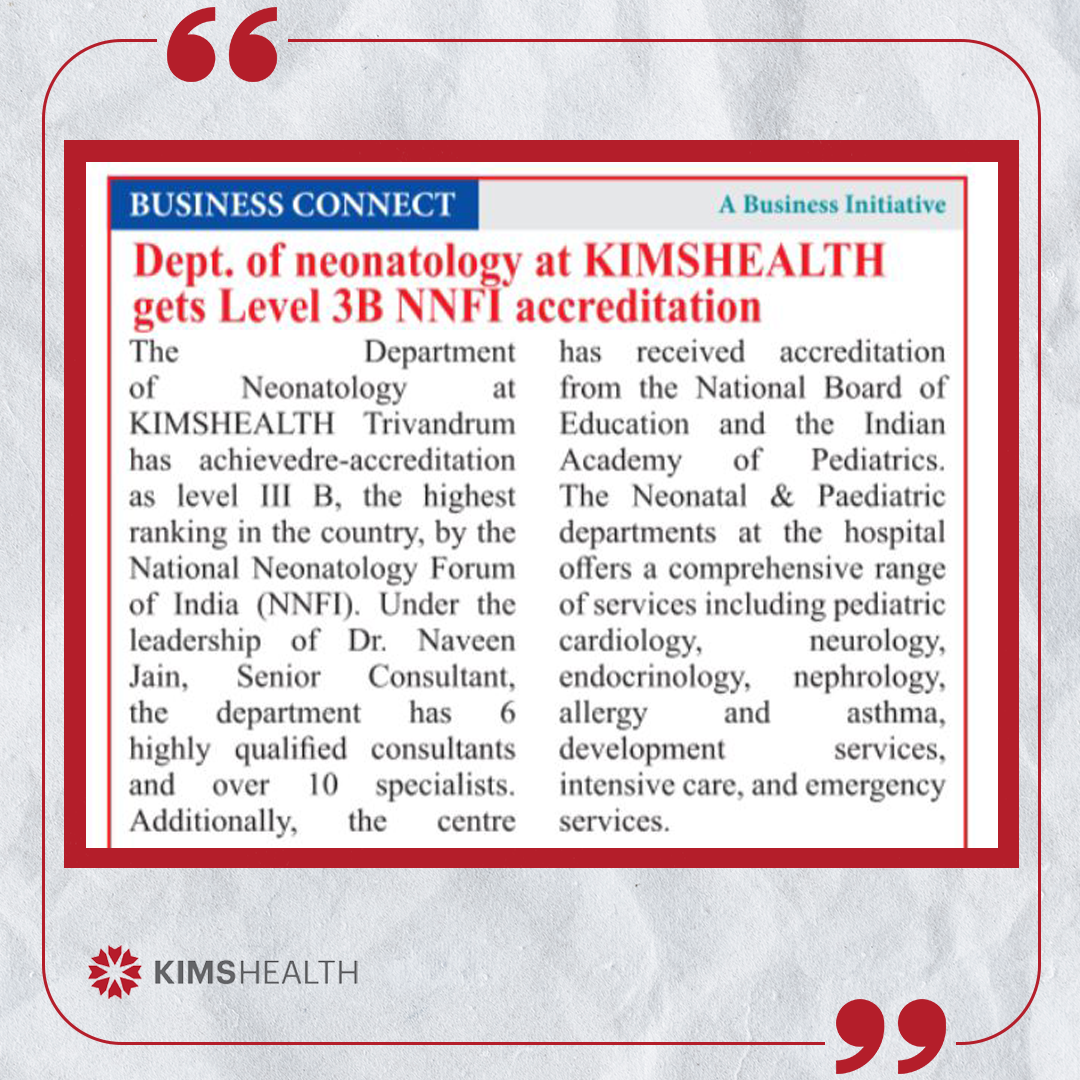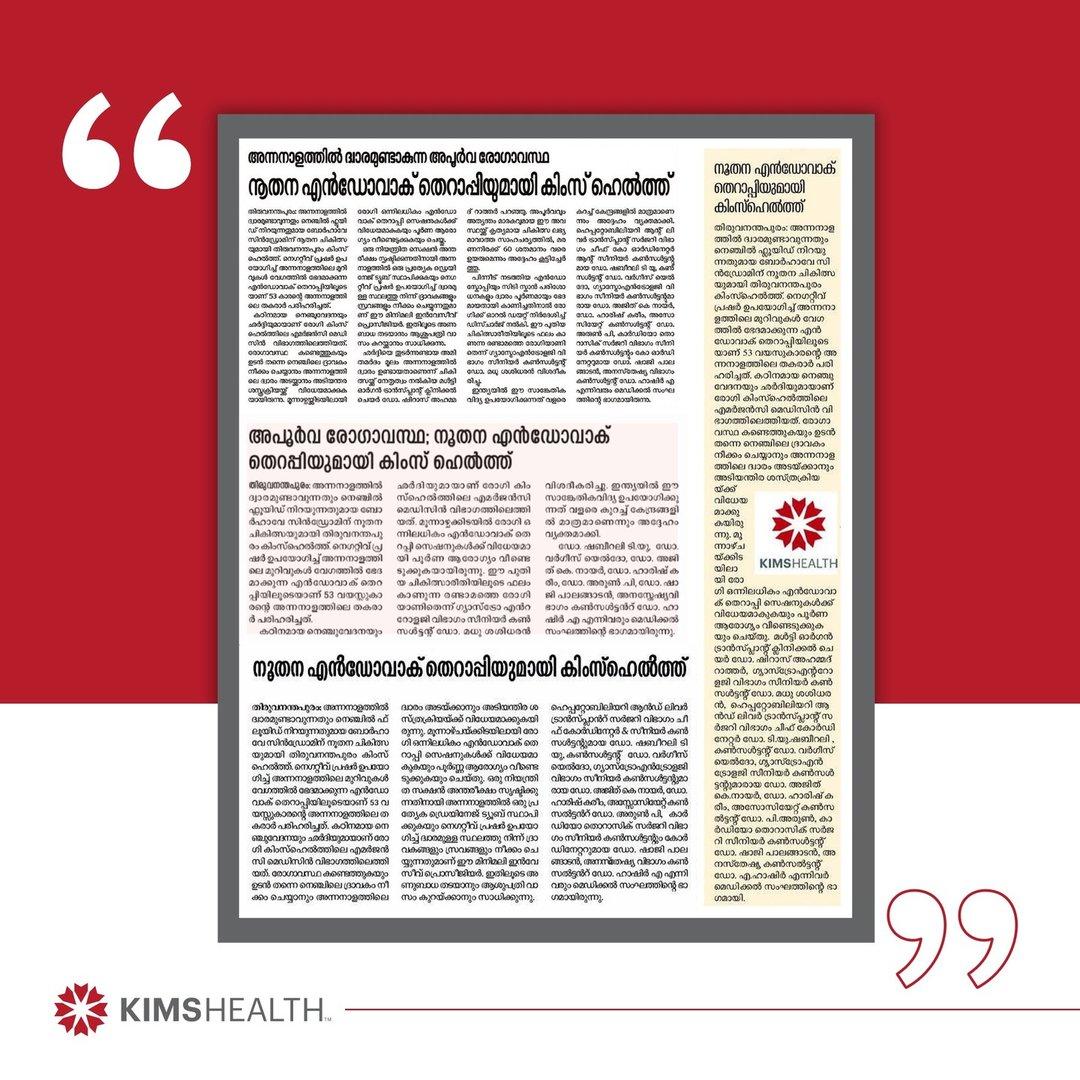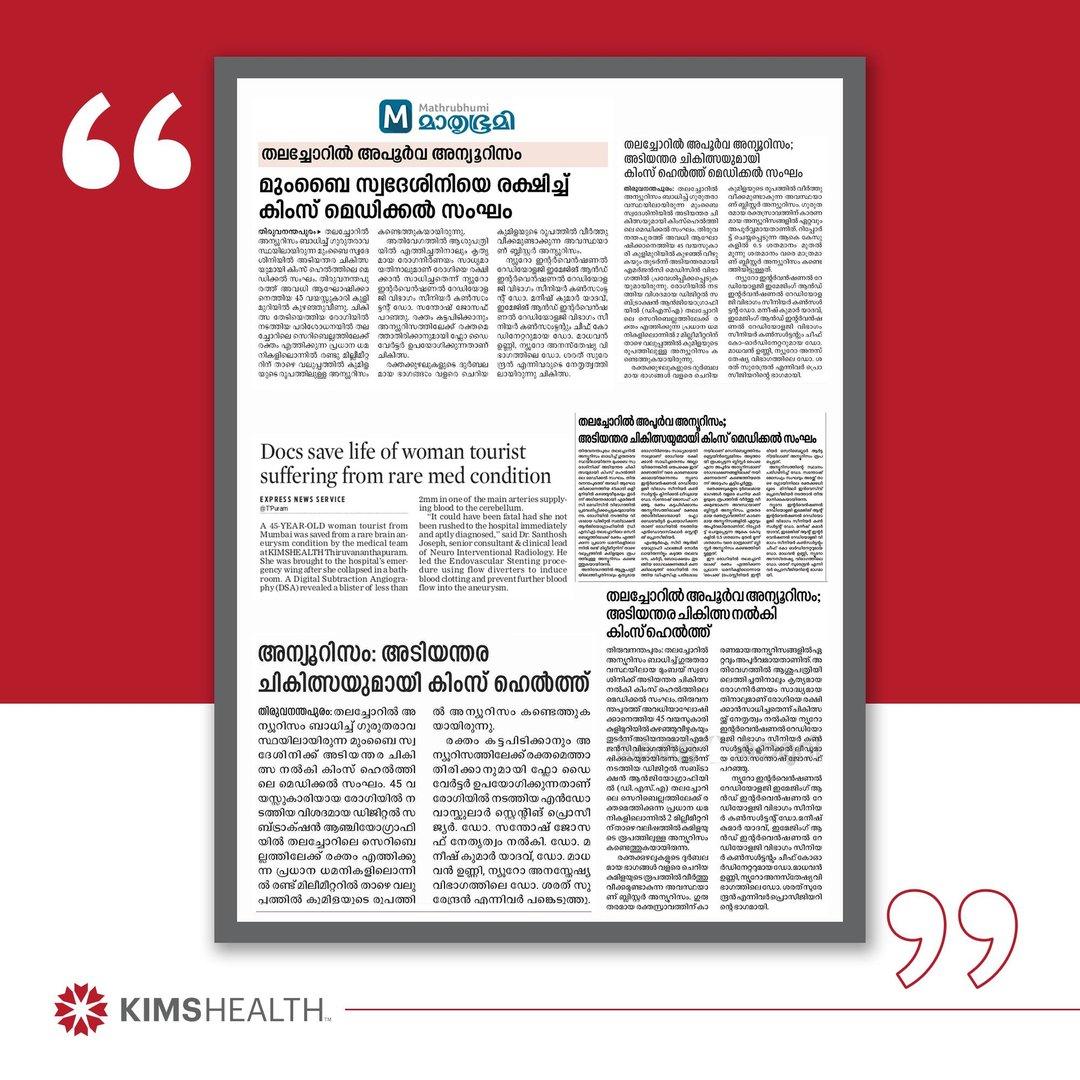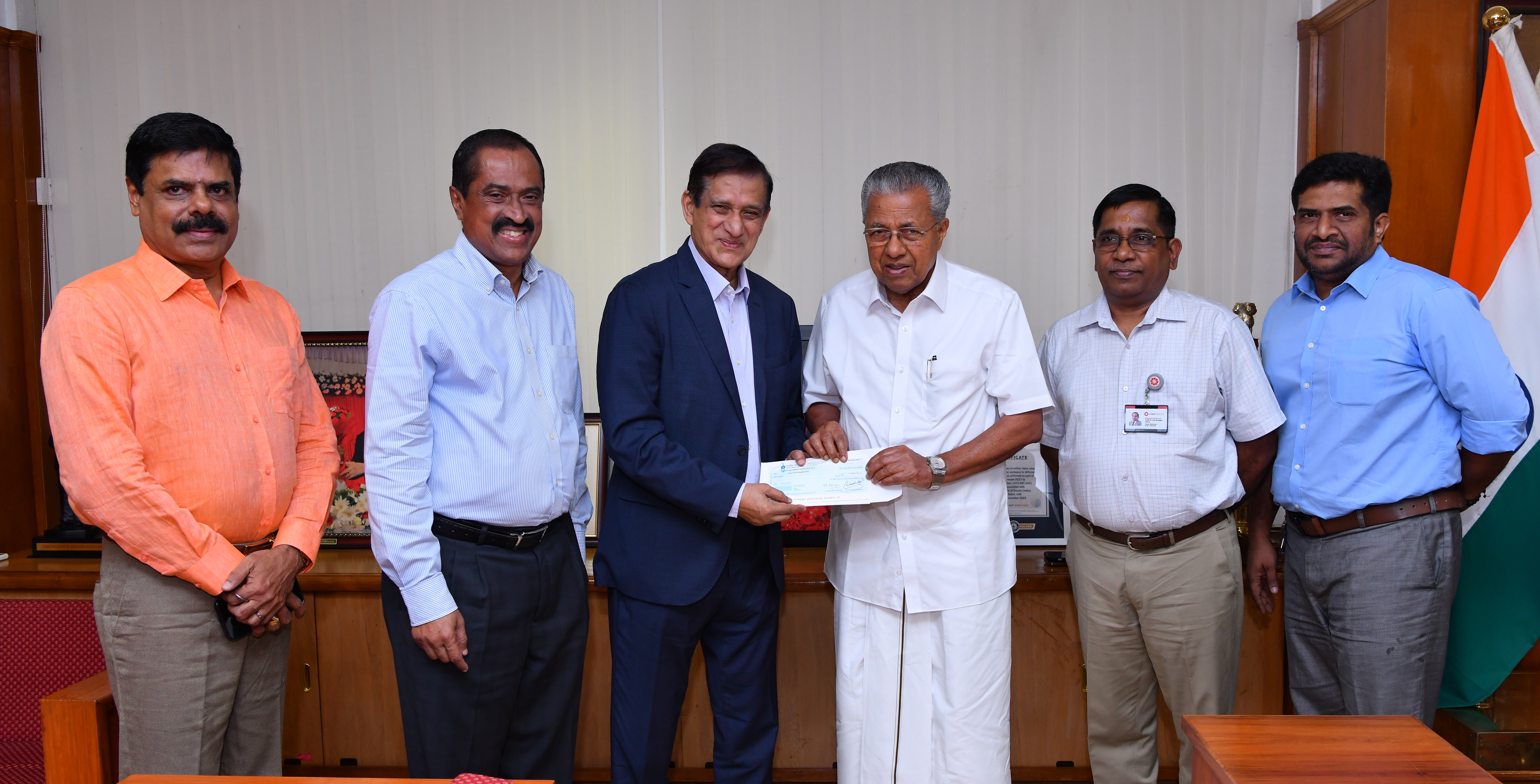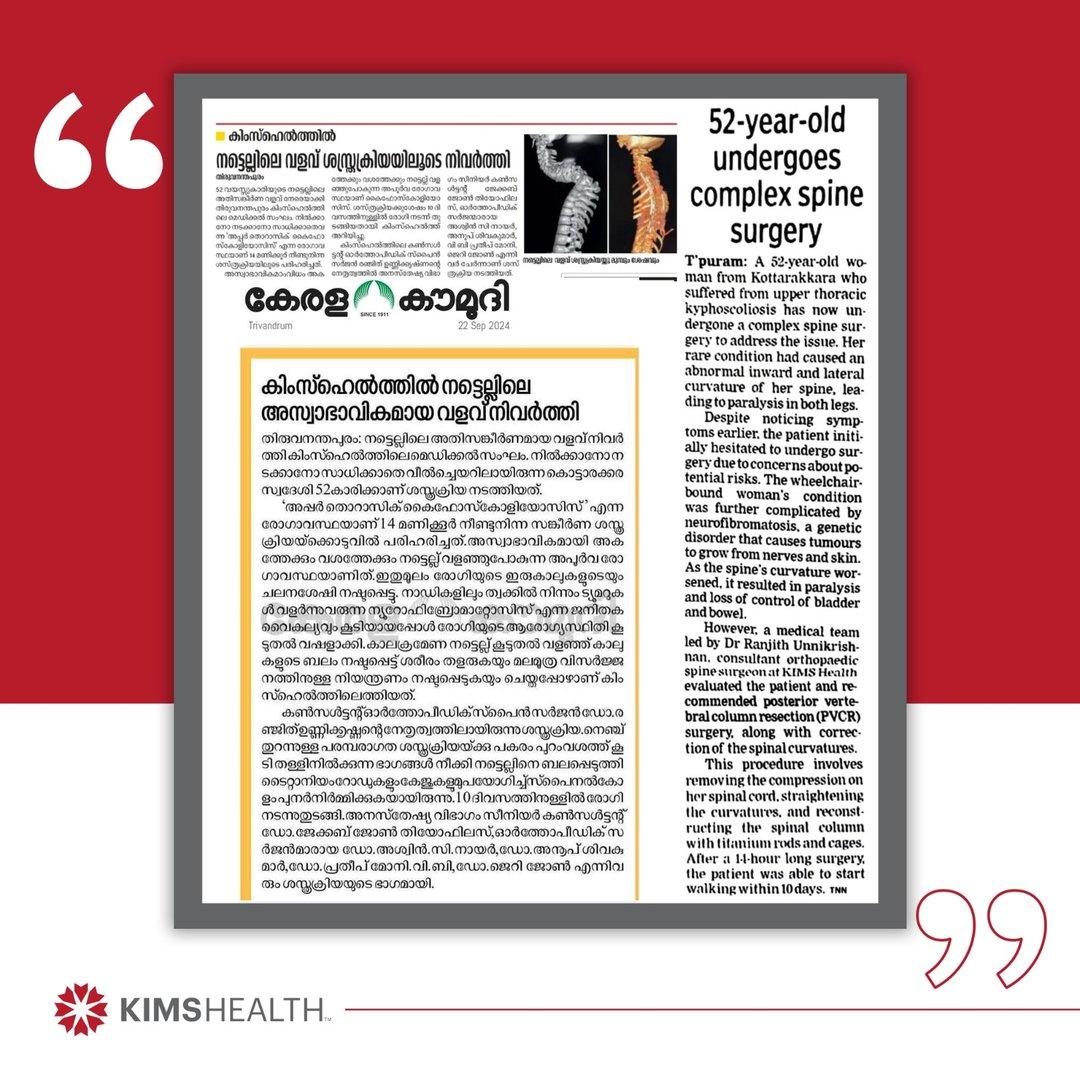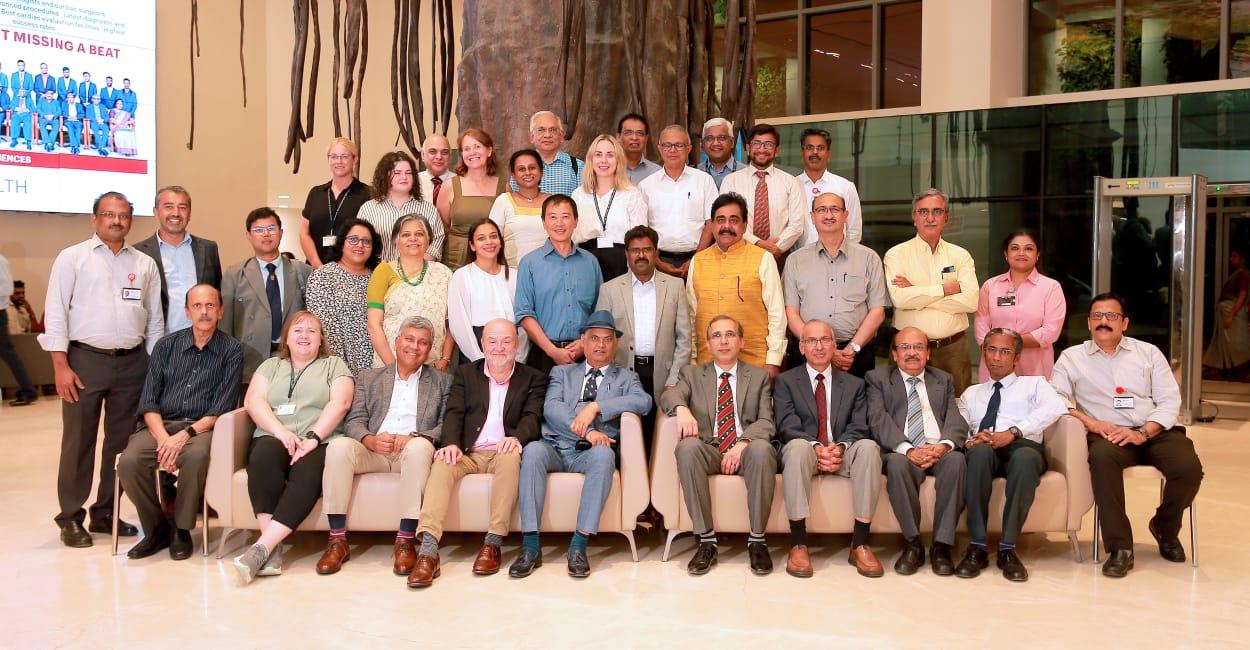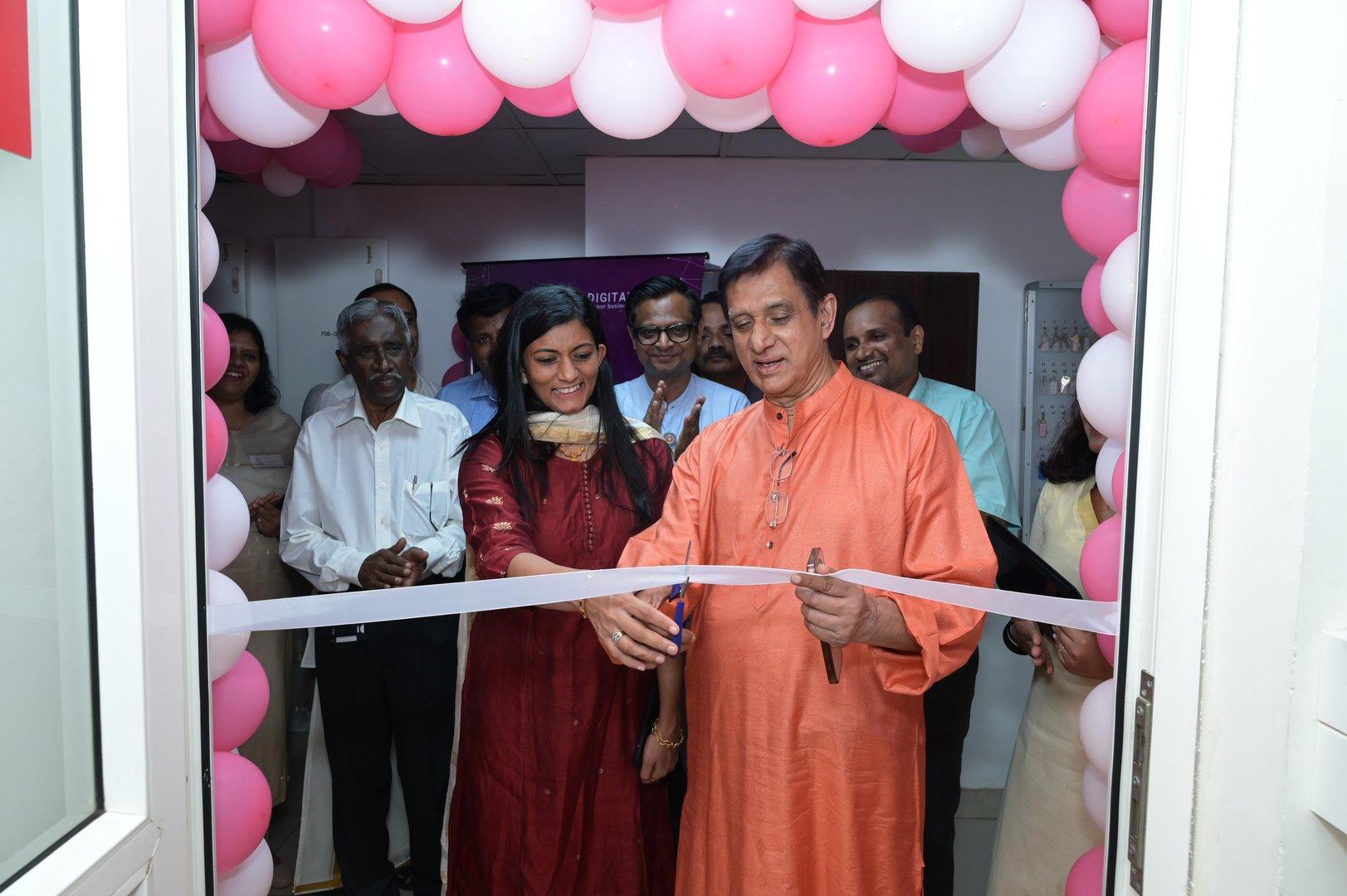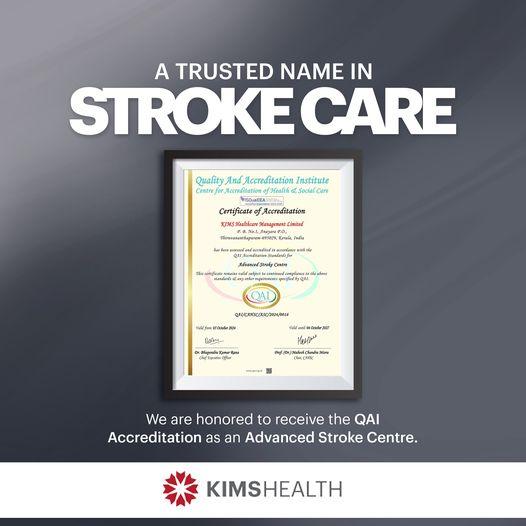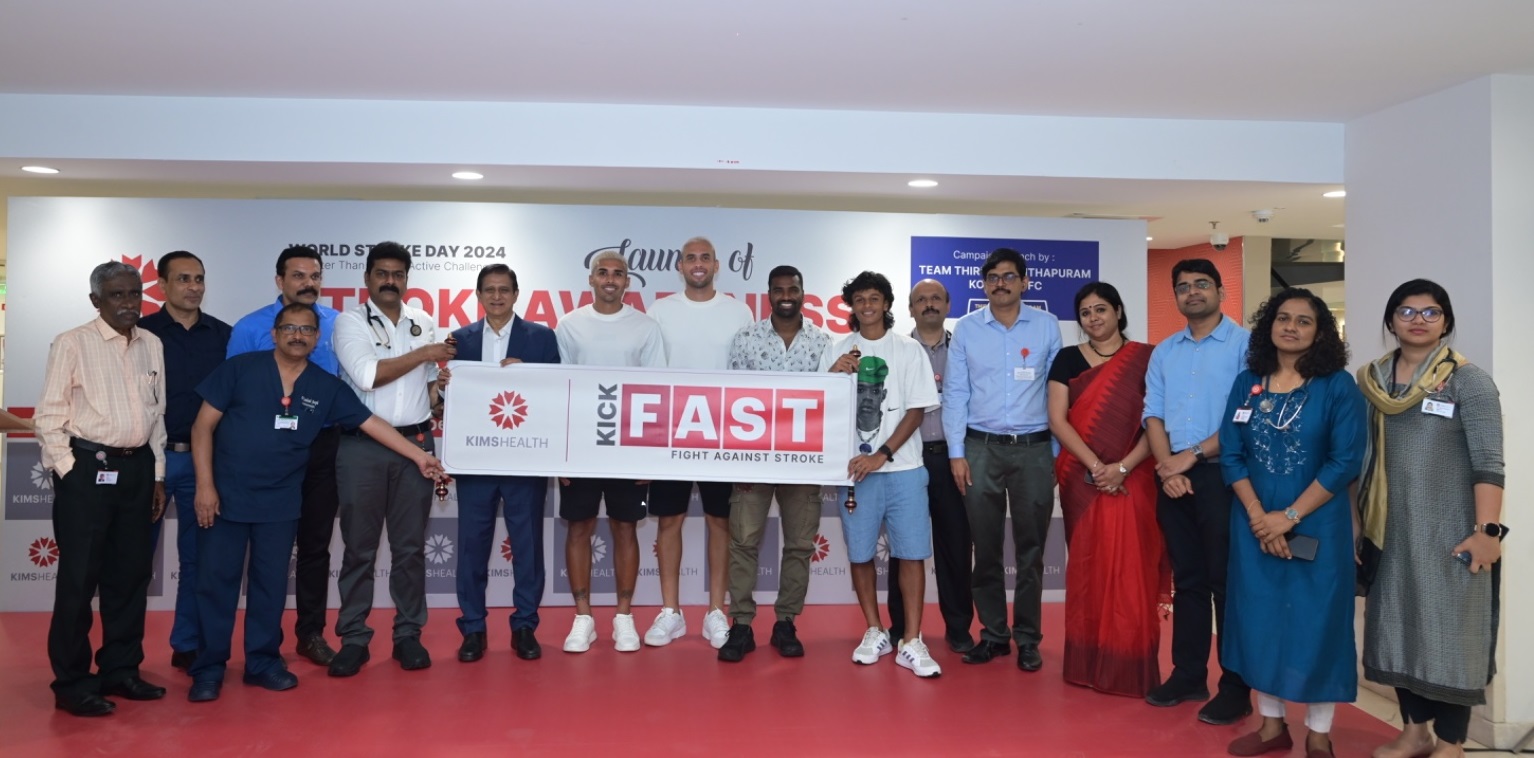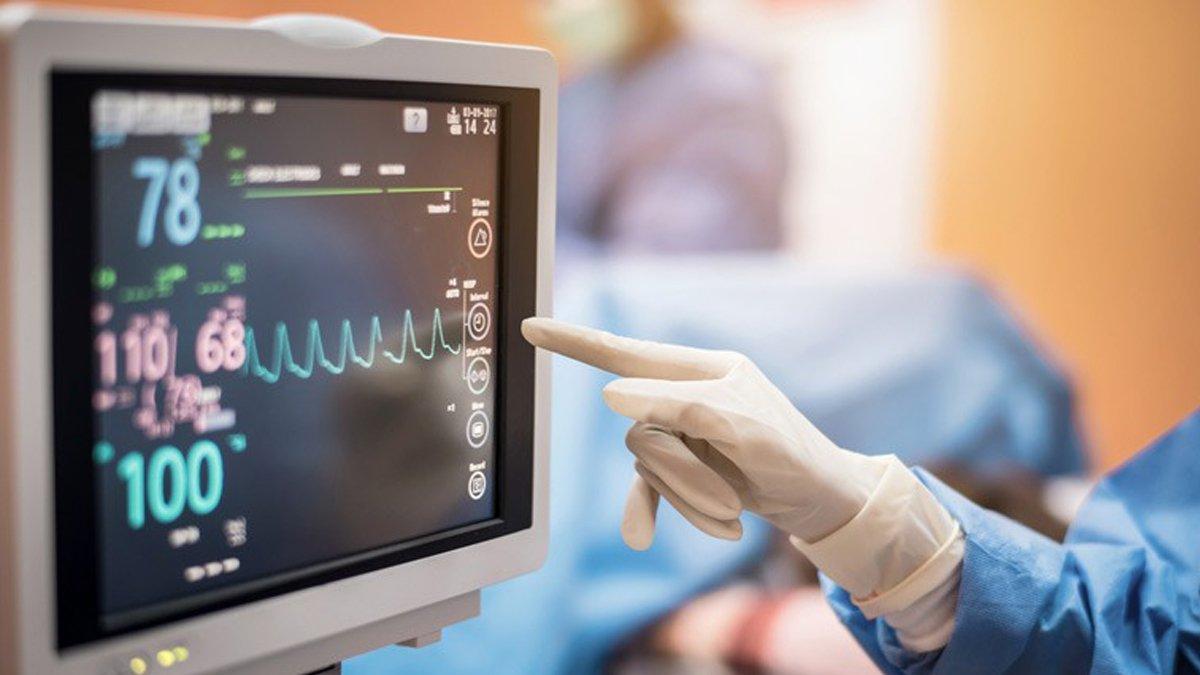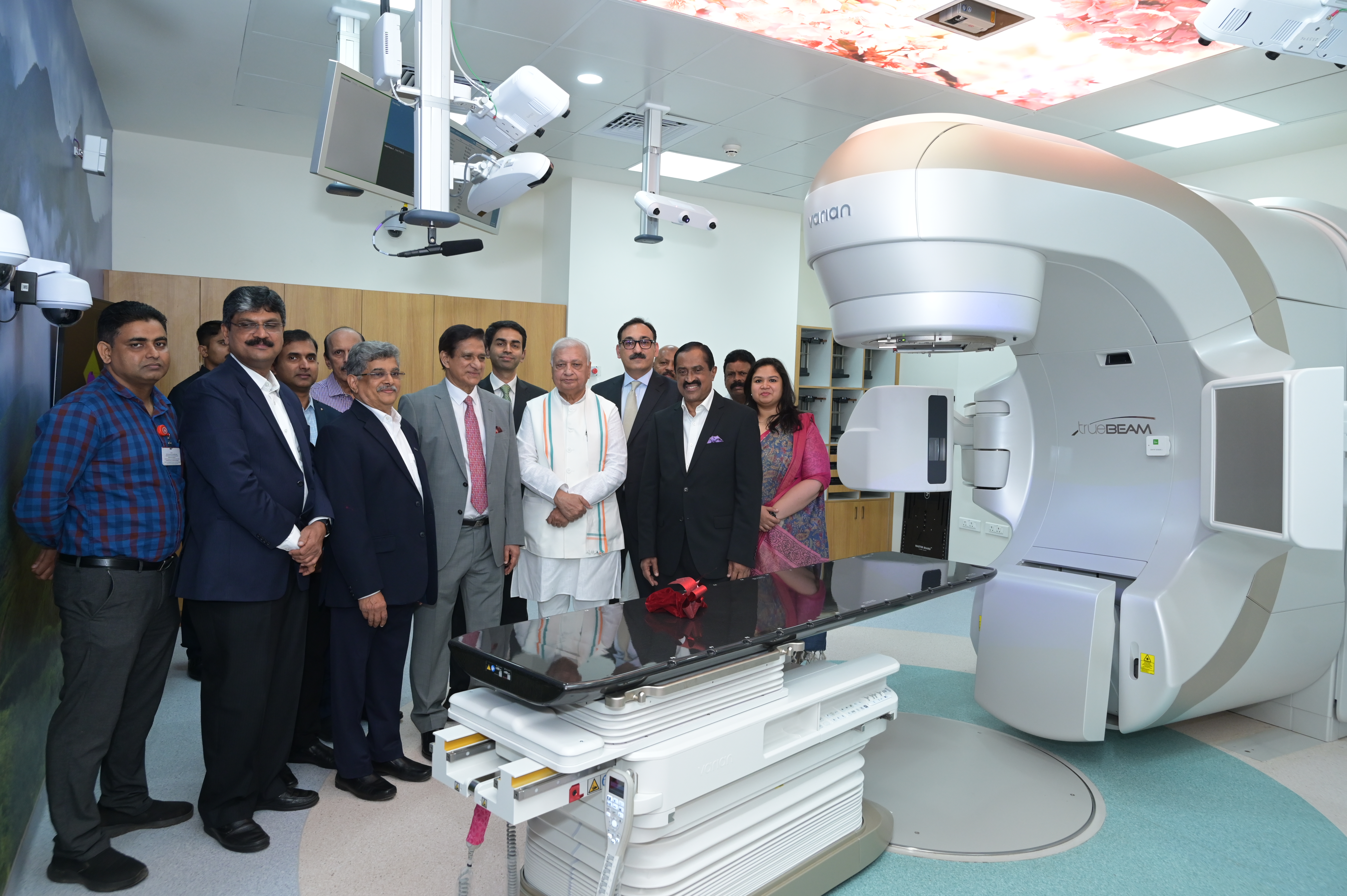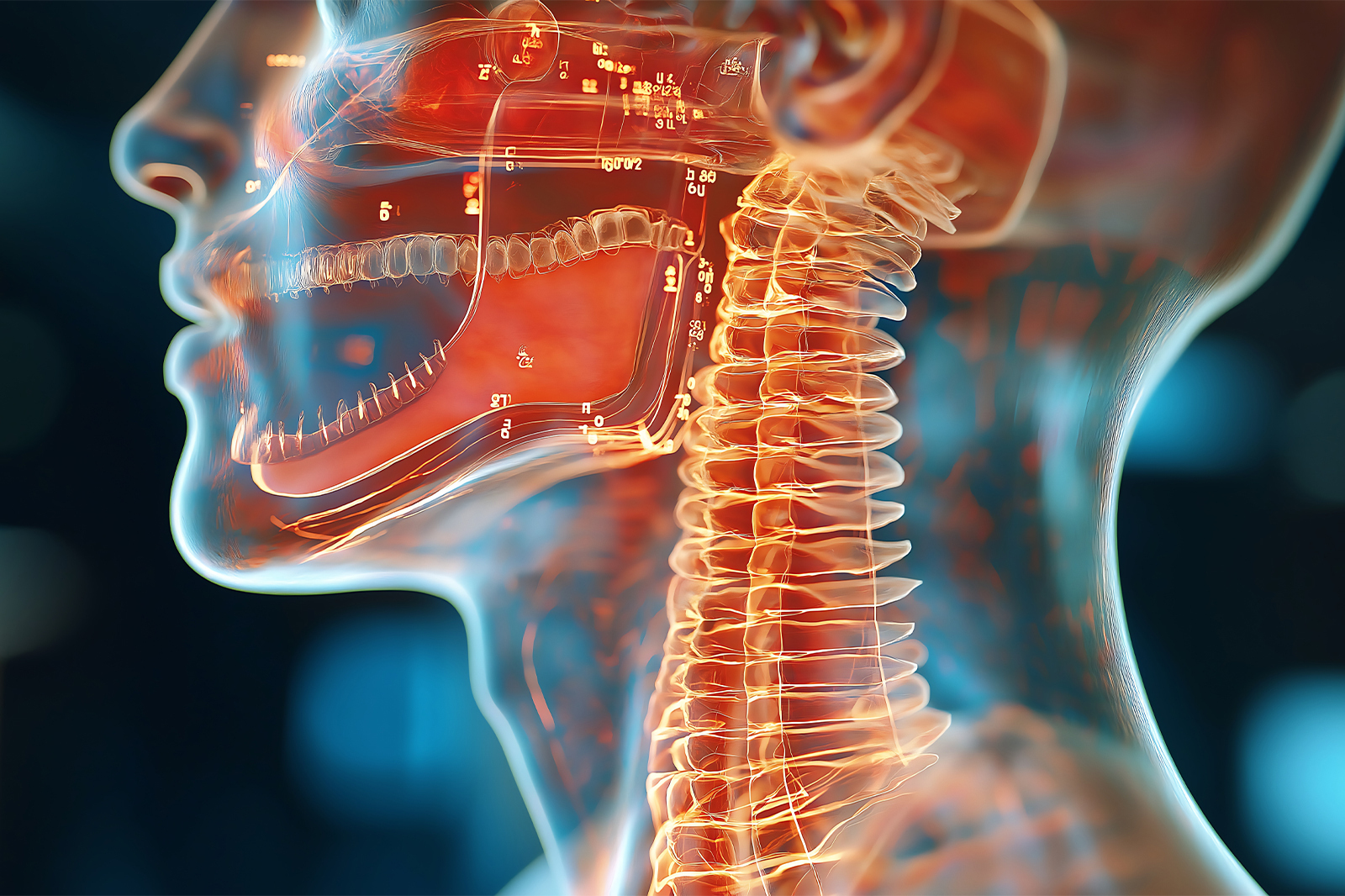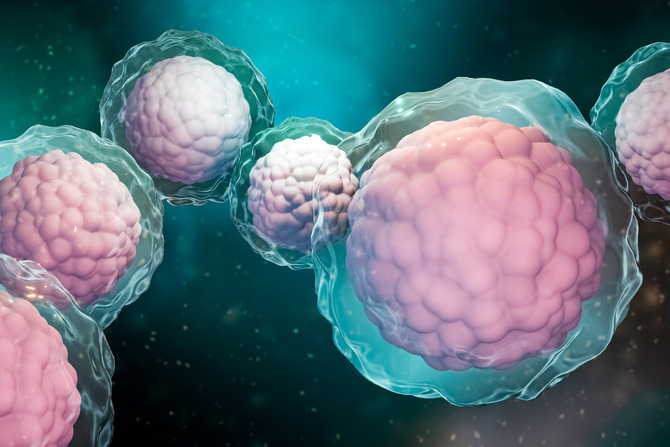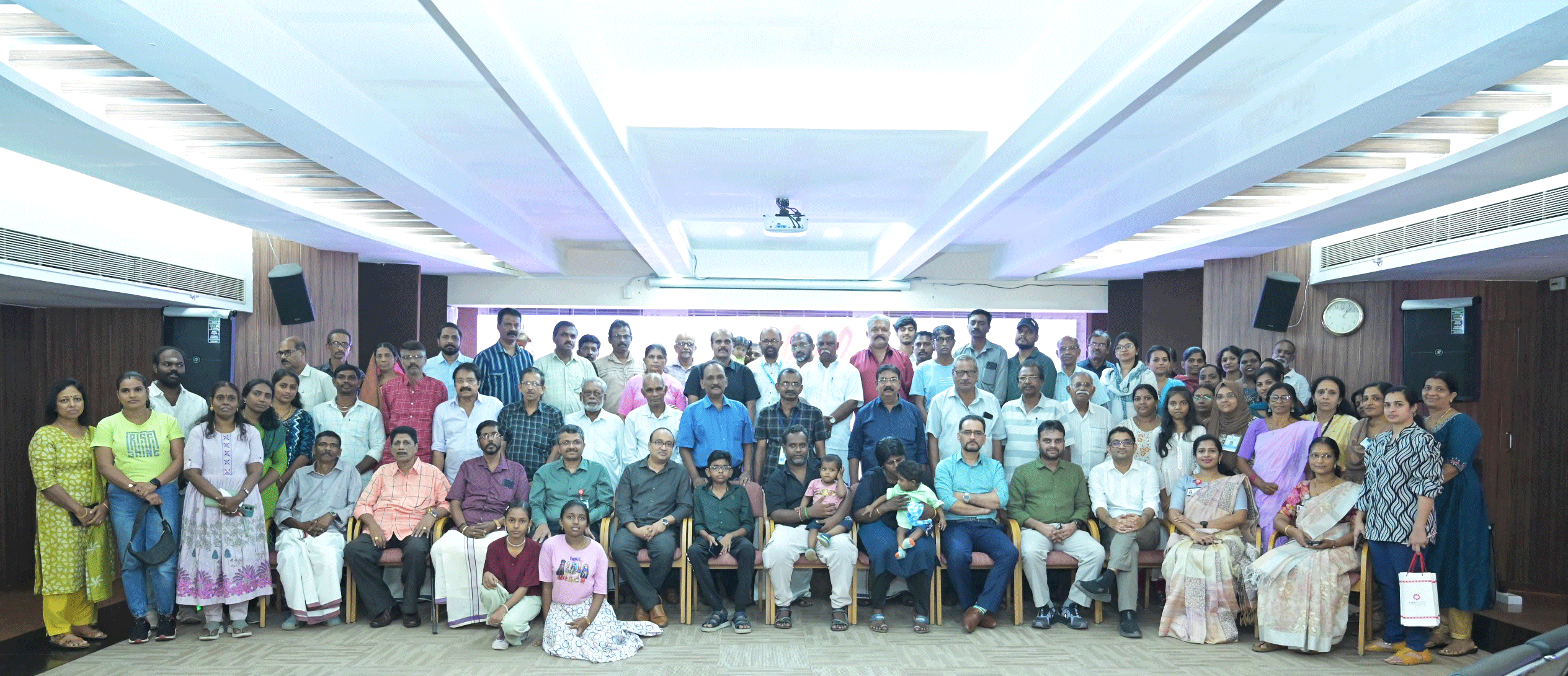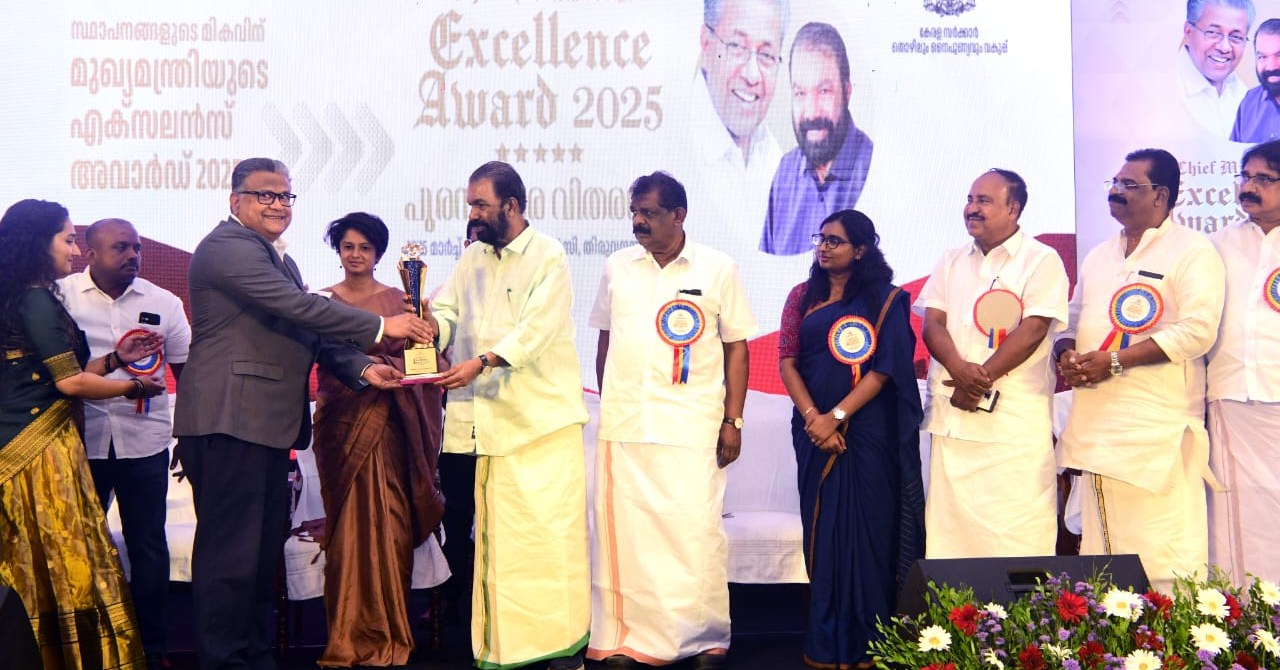

‘Moyamoya’ Disorder: Rare cerebrovascular disorder successfully treated at KIMSHEALTH
10 Apr 2025 | 2 minsThe medical team at KIMSHEALTH Trivandrum, successfully treated a Maldivian patient affected by the rare cerebrovascular disorder ‘Moyamoya.’ The patient was admitted to the hospital with symptoms of stroke, including weakness in the right arm and leg and difficulty in speaking. An MRI scan confirmed a stroke on the left side of the brain. To identify abnormalities in blood flow, the patient underwent Digital Subtraction Angiography (DSA) for a detailed examination of the blood vessels.
The DSA scan confirmed that the patient was affected by the rare Moyamoya disease. This condition occurs when the carotid artery, a major blood vessel supplying blood and oxygen to the brain, becomes blocked or narrowed. As a result, the brain receives reduced blood flow and oxygen supply. To compensate for this lack of oxygen, the body attempts to form tiny collateral blood vessels at the base of the brain. However, these newly formed vessels are often small and fragile, making it difficult for them to supply sufficient blood and oxygen to the brain. This inadequacy can lead to strokes or brain hemorrhages in affected individuals.
The term "Moyamoya" is derived from a Japanese word meaning "puff of smoke." This name describes the tangled network of tiny blood vessels that develop in response to blocked arteries in the brain. Moyamoya disease is more prevalent in Asian countries, particularly in East Asia. Studies indicate that in Japan and Korea, the condition is reported in approximately 0.43 to 2.3 people per 1,00,000 individuals.
The medical team led by Dr. Ajith R., Senior Consultant, Neurosurgery, decided to perform an emergency STMC bypass, also known as cerebral bypass surgery, to restore blood flow to the patient’s brain.
This procedure is similar to coronary bypass surgery performed on the heart. It involves connecting a blood vessel from outside the brain to an internal brain artery, effectively bypassing the damaged or blocked artery and restoring blood circulation.
“Since the patient had Moyamoya disease, the blood supply to the brain was significantly reduced, increasing the risk of stroke. To prevent this, we had to reroute an adequate blood supply from other vessels to the brain,” said Dr. Ajith R.
The exact cause of Moyamoya disease remains unclear, but genetic factors cannot be ruled out as a possible reason. The condition is more commonly observed in people from West Bengal and the northeastern regions of India. “Women are twice as likely to develop Moyamoya disease compared to men,” added Dr. Ajith.
After the surgery, the patient remained in the ICU for two weeks before being shifted to a regular ward. A post-surgical angiogram confirmed that blood flow from the bypass to the brain was optimal. Following significant improvement in his health, the patient was discharged and returned to the Maldives after two weeks. The treatment was carried out by a multidisciplinary team, including Dr. Shaji Palangadan, Senior Consultant & Coordinator, Cardiothoracic & Vascular Surgery; Dr. Santhosh Joseph, Senior Consultant & Clinical Lead, Neurointerventional Radiology; Dr. Manish Kumar Yadav, Senior Consultant, Neuro Interventional Radiology Imaging & Interventional Radiology; Dr. Syamlal S, Senior Consultant & Group Coordinator, Neurology; Dr. Abu Madan, Dr. Navas N.S., Dr. Bobby Iype, Consultants, Neurosurgery, and Dr Sushant B, Consultant, Neuro Anesthesia.
